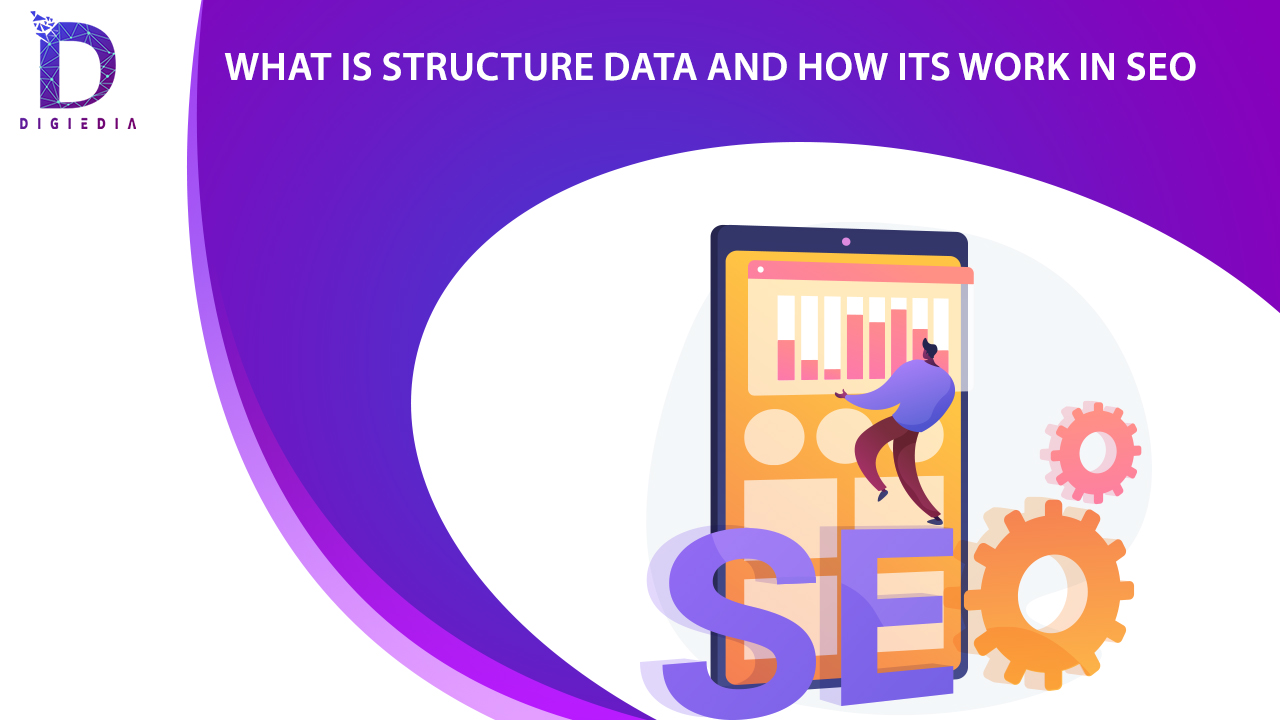
What is structured data and how it works in SEO?
- DIGIEDIA
- Blogs, SEO (Search Engine Optimisation)
- 14 September 2022
- No Comments
Structured data is a method of defining your website in a form that search engines can comprehend. And you’ll need a language to explain your site to search engines. The top search engines utilize a language called Schema.org, which converts your material into code that they can readily interpret. Search engines scan the code and utilize it to deliver search results in a more customized and detailed manner. This code is simple to implement on your website. It is mandatory to have a basic knowledge of structured data and its usage for marketing purposes.
Structured data for SEO, from the perspective of search engines, give more information or clear indications about the content of a page, such as if it includes a recipe or a sequence of steps. To understand structured data and its usage it is primary to have an understanding of how sites appear in search results. A crawler, spider, or bot from a search engine (such as Google) must crawl and index your website for it to appear in search results. When bots explore your website, they collect and index all of the information on it, from the text to the photos to the structured data. The information is subsequently interpreted by the search engine’s algorithm. But deciphering a website isn’t always straightforward, which is why search engines keep updating their algorithms. Adopting it can also help crawlers and search engines execute their jobs more efficiently. It also provides instant, easy-to-understand information about your page. A search engine can determine if your website is about a recipe, guide, ratings, reviews, phone number, and so on. The search engine can then utilize that information to narrow down a user’s search results. For example, if you are searching for a result for a recipe, you might not include your preferences in the initial search. SEO structured data can provide additional information for a search like “ key chocolate cake recipe”. In such cases, google includes recipe’s user ratings, cooking duration, and calorie count. Google could not offer this information accurately without structured data. It would have to predict whether a page explains the cooking time or whether a user comment and rating section indicates the quality of the dish.
When discussing how structured data works, it is important to note that Google does not always adapt its search results. Even if you provide schema markup on a page, such as product pricing, Google may choose not to include information for a variety of reasons, including search intent.
Understanding how structured data works
Google Search makes every effort to comprehend the content of a page. You may assist by supplying structured data on a website that provides specific cues about the meaning of the page to Google. Structured data is a defined format for presenting information about a page and categorizing the page content. If the previous example of a recipe page is considered, google considers what components are used, cooking time and temperature, calories, and so on. Google uses structured data found on the web to analyze the page’s content and to gather information about the web and the world in general. Structured data is also used by Google Search to provide additional search result features and upgrades. A recipe website, for example, with valid structured data is qualified to appear in a graphical search result. Users may search for your recipe by ingredient, calorie count, cook time, and so on since the structured data marks each piece of the dish. Structured data is coded on the page to which it pertains using in-page markup. The structured data on the page describes the page’s content.
Importance of structured data in SEO
Structured data and its usage are important in SEO and are extremely beneficial. Structured data does not boost search ranking. However, other crucial factors help your SEO.
- Rich results
Rich results are visually-enhanced search results with information pulled from relevant structured data. The most common type of rich results is rich snippets. For example, if you are looking for an electric guitar, it will mention the details in the search results like frets, the material of the neck and fretboard, the pickups, ratings, and so on. These rich snippets can increase clickthrough rates and as a consequence also increase organic traffic to your website.
- Semantic search
Structured data and its usage is also a part of supporting the semantic search. Semantic search, as opposed to regular keyword matching, focuses on the meaning of search queries. It’s how Google gets particular results when you search for something ambiguous. Since structured data assists Google understand what your sites are about, they may appear for more relevant search searches.
- Clearly explains your website
Structured data provides Google with all of the information it requires to comprehend your website. Giving Google a thorough analysis of your page might help you rank higher in search results. This is because structured data eliminates any doubts about the format and content of your page. Google understands what your website is about since you utilize structured data or schema markup to transcribe and translate it.
- Better experience for customers
While searching on google, no one wants irrelevant search results, to pass through them and waste their time. Therefore, google makes sure to include the user experience as a part of its ranking algorithm. For a variety of reasons, structured data and its usage for Google can help your website give a better customer experience. You provide Google with a detailed blueprint for your page.
This structure ensures that Google understands your page correctly. That degree of comprehension allows Google to easily identify whether your content provides value to users, which can help it rank higher in search results. You provide users with a helpful overview of your page as well. A structured snippet with ratings, for example, might communicate important trust signals about your products or services. Meanwhile, a recipe-organized excerpt can assist customers in determining whether or not your meal satisfies their time limits and nutritional choices. All of these pieces of information can persuade a person to visit your website.
- E-A-T
The acronyms E-A-T stand for expertise, authority, and trust. These are the three elements that Google searches for on a web page. The use of structured data provides Google information about your website, its content, and its writers, making it simpler to evaluate your E-A-T.
